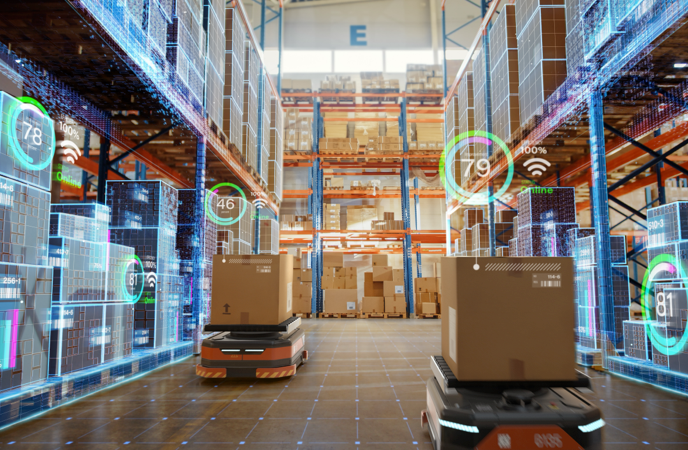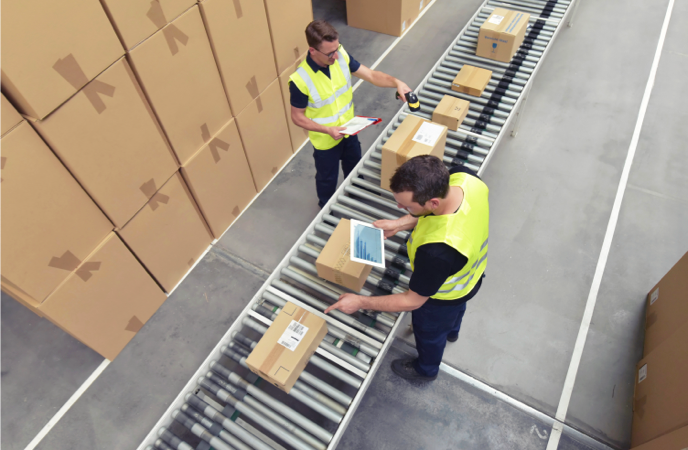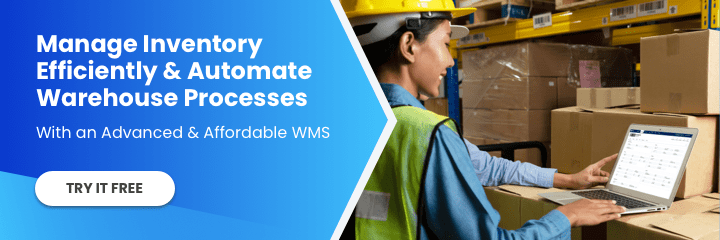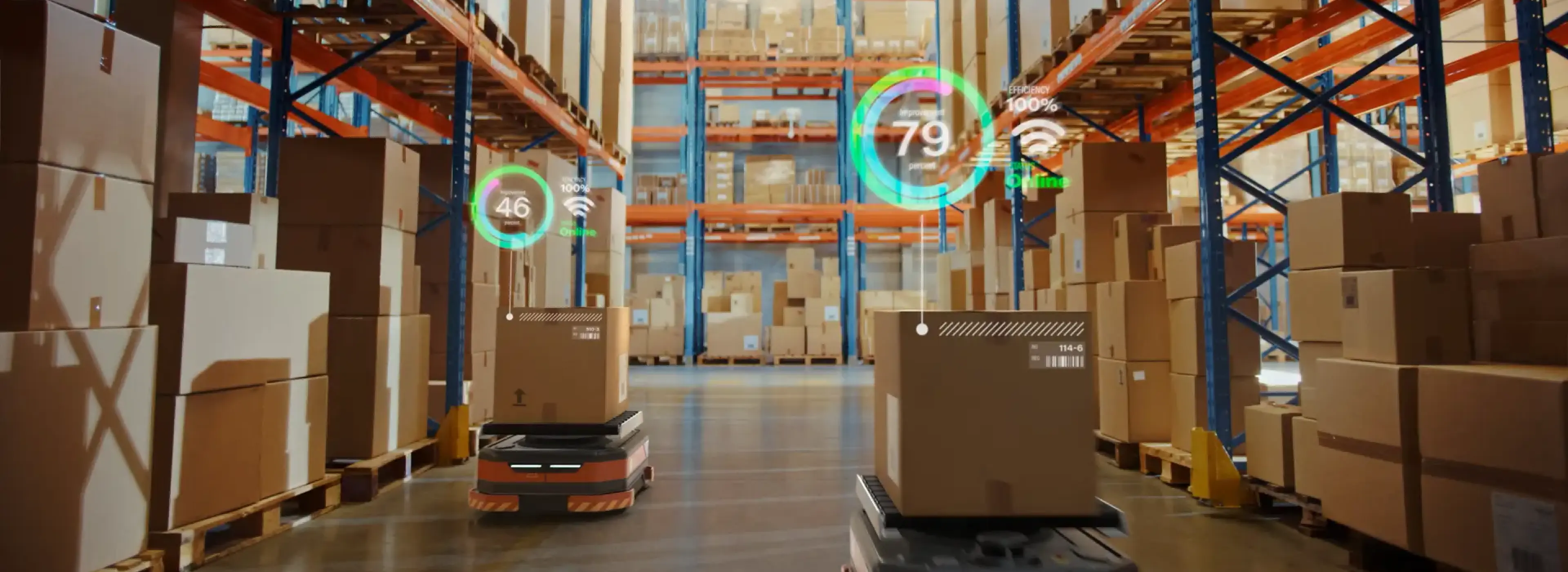As a warehouse operator, you face the daily challenge of increasing productivity, reducing costs, and improving efficiency. Warehouse automation offers an exciting opportunity in this pursuit, but as with any new and influential technology, it all starts with understanding the fundamentals.
Click Here: Increase Warehouse Efficiency With This Advanced and Affordable WMS
That is the purpose of this comprehensive article — to light the way as you navigate through the concepts, technologies, opportunities, and possible downsides of automated warehouses. Whether you’re a seasoned warehouse manager, a CFO weighing the costs and benefits, or a CEO envisioning the big picture, you’ll find this article helpful.

Demystifying Warehouse Automation: A Brief Overview
At its core, warehouse automation systems apply technology to centralize and speed up warehousing processes, thus minimizing human involvement. In essence, it’s about harnessing the power of technology to streamline and enhance warehouse operations such as tracking inventory, picking and packing, or transporting goods within the facility. By 2025, the global warehouse automation market is expected to reach $27.2 billion.
Automation can occur on various levels, ranging from semi-automated systems—where technology supports manual work—to fully automated warehousing environments where robots, conveyor belts, and automated storage and retrieval systems (AS/RS) operate without human intervention. The level of automation implemented depends greatly on various factors, including warehouse size, budget, and specific needs.
The integral elements of warehouse automation often include tools like Warehouse Management Systems (WMS) and Workflow Management Software. These systems work in tandem to manage inventory, track goods, and plan resource distribution efficiently.
However, it’s not just about software; physical hardware also plays a huge role. From automated guided vehicles (AGVs) scooting around and transporting goods to robotic arms picking and packing items, the landscape of the modern automated warehouse is a virtually orchestrated ballet of software and machinery.
Furthermore, technologies like the Internet of Things (IoT), Artificial Intelligence (AI), and Machine Learning (ML) are reinventing the way warehouse automation works, opening new doors for efficiency and accuracy.
In this fast-paced, demand-driven industry, automation isn’t just a luxury—it’s the cornerstone of a successful warehousing strategy. Moving on, we will explore different warehouse automation levels and types, the benefits and potential disadvantages, and the right time to automate your warehouse.
What are the Three Levels of Warehouse Automation?
There are three levels of warehouse automation, each with unique advantages and functionalities. Let’s explore each level to gain a better understanding.
1. Semi-Automated Warehouses
Imagine the possibilities of marrying an efficient workforce with smart, automated systems. Yes, right in the middle of the automation spectrum, we find semi-automated warehouses. Here, specific tasks are performed manually, while others are automated. This blend allows for the enhanced speed and increased accuracy of automation without placing the full burden of cost and resource restructuring that comes with full automation.
2. Fully Automated Warehouses
Now, picture a warehouse operating with little or no human intervention. That’s precisely what fully automated warehouse systems offer. They deploy a wide array of technologies such as AS/RS, conveyors, robotics, workflows, and WMS to execute all tasks ranging from inventory management to packing and shipping. While offering improved efficiency and accuracy, full automation requires significant financial commitment and lengthy implementation timelines.
3. Lights-out Warehouses
Imagine an entire warehouse run exclusively by machines, with lights turned off (hence the name). Welcome to lights-out warehouses, the pinnacle of warehouse automation. Adopting the latest technological advancements, such as robotics and AI, these warehouses redefine efficiency and productivity. However, they may also pose substantial challenges, including high implementation and operating costs and a need for specialized skills to manage and maintain the system.
To pick the best level of automation for your warehouse, you need to weigh the advantages against implementation requirements and consider your overall business strategy. Remember, there’s no one-size-fits-all solution—it’s all about finding what fits your unique needs and budget.

What is the Objective of Warehouse Automation?
Warehouse automation serves several primary objectives geared toward enhancing efficiency and reducing errors in warehouse operations. By understanding these objectives, you can better navigate your automation strategies, aligning them with your business goals. Let’s review these core objectives in detail.
Increased Operational Efficiency
The first and foremost objective of implementing warehouse automation is to increase operational efficiency. Through automation, repetitive tasks can be handled by machines or software, reducing manual effort and human interaction. Automated task management, notifications, labeling, sorting, and packaging save time and reduce the likelihood of human error, leading to a more reliable operation.
Cost Reduction
Contrary to popular belief, automation doesn’t aim to replace your workforce but instead helps to redirect your human resources to more strategic tasks, thus enhancing productivity. Automation technology, like workflow management software, robotic process automation (RPA), and warehouse management systems (WMS), can yield significant operational cost savings by reducing labor costs and inventory losses due to errors.
Improved Accuracy and Quality
Warehouse automation substantially improves the accuracy of processes and, subsequently, the quality of output. For instance, picking systems and automated storage and retrieval systems (AS/RS) paired with easy-to-use workflow management software can help standardize and enforce processes that will increase quality and consistency throughout the warehouse.
Safety and Compliance
Another crucial objective of automating your warehouse is to improve safety and compliance. Automation minimizes the risk of injury by delegating hazardous tasks to machines and robots. Moreover, automated systems provide a higher degree of traceability, producing accurate records and reports that facilitate regulatory compliance.
Scalability
Lastly, automation paves the way for scalability. It provides the flexibility to scale up or scale down operations swiftly and efficiently in response to fluctuating market demand. With automation, you’re essentially future-proofing your warehouse operations, ensuring you’re ready for growth when it comes your way.
These primary objectives of automation could look different for every organization, but they provide a general understanding of what you can achieve with warehouse efficiency and proficiency. Remember, automation’s main goal is to streamline your operations and achieve a high degree of operational consistency, regardless of your business size or industry.
What are the Different Types of Automation Solutions for Warehouses?
As you explore automation, you’ll discover many types of warehouse automation solutions that can enhance your operations. Let’s break them down:
Workflow Management Software
Workflow Management Software, such as Warehouse Workflows, eliminates the need for human intervention in warehouse task management, process enforcement, notifications, records updates, and more. The system uses rule-based logic to create and assign tasks, notify stakeholders, update systems, and more.
AS/RS Systems
Automated Storage and Retrieval Systems (AS/RS) represent one of the fundamental technologies for warehouse automation. These systems handle tasks like storing and retrieving items without manual intervention, thus enhancing efficiency and accuracy while reducing labor costs. According to Kardex, automated storage and retrieval systems can reduce floor space usage by up to 85%.
Pick to Light/Put to Light Systems
Pick to Light and Put to Light systems use light signals to guide operators and accelerate the order-picking process. The system lights up the bin or shelf where an item is located and the quantity to pick, optimizing picking accuracy and speed.
Automated Guided Vehicles (AGVs) & Autonomous Mobile Robots (AMRs)
AGVs and AMRs are self-navigating robots used for transporting materials within a warehouse. While AGVs follow predefined paths, AMRs are more advanced and can navigate dynamically by avoiding obstacles, leading to increased flexibility.
Voice Picking
Voice picking, also known as voice-directed warehousing, employs speech recognition and speech synthesis to allow workers to communicate verbally with the warehouse management system. It enhances picking accuracy and efficiency while freeing up workers’ hands and eyes for safer and more productive operations.
Conveyor and Sortation Systems
These are used for high-speed transportation of goods from one part of the warehouse to another. Advanced sortation systems can automatically divert items to different areas based on specific criteria, ensuring accurate processing of large volumes of goods.
Warehouse Management System (WMS) & Warehouse Execution System (WES)
These software systems control and monitor warehouse operations, including inventory, labor management, order picking, and shipping. WMS focuses on storage and inventory control, while WES coordinates and optimizes work across different types of automated equipment inside the warehouse. They provide real-time data and insights, enabling better decision-making.
While this suite of automation solutions platform offers a host of benefits, it’s essential to understand that no system comes without potential drawbacks. Let’s pivot and consider some potential disadvantages.

What are the Disadvantages of Warehouse Automation?
While automation presents numerous advantages, it’s also crucial to understand its downsides. As you consider automating your warehouse operations, keep in mind the following aspects:
Initial Investment Costs
Implementing automation solutions requires significant capital, often deemed the main deterrent for many companies. The cost of automation equipment, software, and the infrastructure needed to support these systems can be high, especially for small to mid-sized businesses. It’s important to carefully assess financial viability and the potential return on investment before investing in automation.
Complexity and Maintenance
Operating automation systems can involve complex processes requiring specific skills or technical knowledge. These systems, like any mechanical equipment, require regular maintenance to ensure optimal functioning. This might lead to added costs in training employees or hiring specialists to manage and maintain the system.
Reduced Flexibility
Automated warehouses can lack flexibility compared to more traditional, manual ones. Once automation equipment is established, making changes due to new product lines, updated packaging, or modified business needs may prove challenging and time-consuming.
Risk of System Failure
Like all technologically advanced systems, there is a risk of system failure or breakdowns. In such disruptions, your operations could suffer, resulting in costly downtime and potentially affecting customer satisfaction and trust.
Cybersecurity
While efficient and cost-effective, warehouse automation can pose cybersecurity risks such as malware attacks, unauthorized access, and data breaches. It is crucial to mitigate these risks with strong cybersecurity measures, including regular system updates, secure access controls, data encryption, security audits, and staff training.
In summary, while the benefits of automation are compelling, it’s essential to carefully consider these potential disadvantages as part of your holistic decision-making process.
Deciding the Right Time: When to Automate Your Warehouse
Deciding when to automate your warehouse can be daunting, but it doesn’t have to be. A few key factors can inform your strategy and set you on the path to successful implementation. So, let’s delve into the specifics.
Demand, Growth, and Capacity
One of the primary drivers for automation is customer demand. If your current system cannot keep pace with orders, if you find yourself constantly coping with backlogs, or if you simply cannot scale to meet anticipated growth, automation can offer a solution. Analyze your capacity and throughput figures. If your warehouse is working at its peak and there’s more demand projected, it’s time to consider automation.
Labor and Staffing Issues
Labor shortage and labor costs are key drivers. This manifests in two critical ways: the difficulty in finding a reliable, skilled workforce and the high costs associated with human workers. If staffing challenges are a constant thorn in your side, or labor costs are consuming your budget, automation can provide a respite.
Operational Constraints
Physical or spatial constraints often hinder warehouse operations. If your operations are constrained due to space limitations or the inability to safely store and retrieve certain types of goods, automation technologies, with their space competence and safety, absolutely fit the bill.
Quality Control and Accuracy
For industries that deal with delicate or high-value products or where precision is crucial, errors can be expensive or catastrophic. Automation reduces human error, thus improving accuracy and quality of operations.
Consider the aspects above while assessing the need for automation. Call your team, evaluate your needs, and make the optimum choice to give your warehouse a new outlook.
Conclusion
Now that you know the fundamental answer to the question, “what is warehouse automation?”, you can make informed decisions that could determine the future success of your warehouse.
To sum it up, warehouse automation is not just a fad but a significant operational shift in the warehousing world. It’s a productivity enhancer, a cost-cutter, and a step forward into the future. Yet, it comes with its share of challenges and considerations.
Each step to automate your warehouse should be carefully planned and executed. Look at your business inside and out before diving in. Consider your operational needs, workforce availability, growth projections, quality requirements, and, of course, your financial capability. Try to foresee the prospects and pitfalls, weigh the benefits against the disadvantages, and then make an informed decision.
Automation is truly an exciting journey, but it’s not a silver bullet to all warehousing woes. It’s wise to stay updated, understand the basics, and steadily build on your knowledge. Remember, this article is your starting point in exploring warehouse automation; revisit it whenever needed as you navigate through this complex yet fascinating domain.
If you’re interested in automated warehousing, contact our experts today.
Stay up to date on warehouse technology trends and automation by following us on LinkedIn, YouTube, X, and Facebook.












